 W
WAlepocephalus is a genus of slickheads found in all oceans.
 W
WAnemonia is a genus of sea anemones belonging to the family Actiniidae.
 W
WTriggerfish are about 43 species of often brightly colored fish of the family Balistidae. Often marked by lines and spots, they inhabit tropical and subtropical oceans throughout the world, with the greatest species richness in the Indo-Pacific. Most are found in relatively shallow, coastal habitats, especially at coral reefs, but a few, such as the oceanic triggerfish, are pelagic. While several species from this family are popular in the marine aquarium trade, they are often notoriously ill-tempered.
 W
WThe Mediterranean barbel or southern barbel is a species of ray-finned fish in the family Cyprinidae. It is found in France and Spain. It is one of the tastiest river fish, prized for its delicate texture and succulent flavor.
 W
WDardanus calidus is a species of hermit crab from the East Atlantic and Mediterranean Sea.
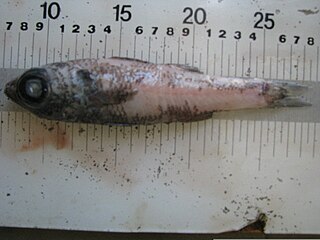 W
WEpigonus telescopus, the black cardinal fish, is a species of deepwater cardinalfish found in most temperate oceans worldwide, at depths of between 75 and 1,200 metres though mostly between 300 and 800 metres. It can reach a length of 75 centimetres (30 in) TL though most specimens do not exceed 55 centimetres (22 in) TL. It has been reported that this species can reach an age of 104 years.
 W
WFelimare villafranca is a species of colourful sea slug or dorid nudibranch, a marine gastropod mollusc in the family Chromodorididae.
 W
WGadella maraldi, the gadella or morid cod, is a species of fish in the family Moridae from the warmer waters of the north eastern Atlantic Ocean and the Mediterranean Sea.
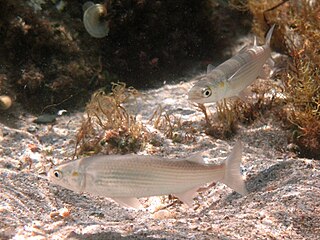 W
WThe golden grey mullet is a fish in the family Mugilidae.
 W
WThe greater amberjack, also known as the allied kingfish, great amberfish, greater yellowtail, jenny lind, purplish amberjack, rock salmon, sailors choice, yellowtail and yellow trevally, is a species of predatory ray-finned fish in the family Carangidae, the jacks and pompanos. It is found in temperate, subtropical and tropical seas around the world. It is a popular quarry species for recreational fisheries as well as being an important species in commercial fisheries. It is the largest species in the family Carangidae.
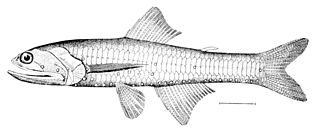 W
WLampanyctus crocodilus, the jewel lanternfish, is a lanternfish of the family Myctophidae, found in west Mediterranean Sea and north Atlantic Ocean. Bathypelagic between 400 and 2000 m.
 W
WThe marbled electric ray is a species of electric ray in the family Torpedinidae found in the coastal waters of the eastern Atlantic Ocean from the North Sea to South Africa. This benthic fish inhabits rocky reefs, seagrass beds, and sandy and muddy flats in shallow to moderately deep waters. It can survive in environments with very little dissolved oxygen, such as tidal pools. The marbled electric ray has a nearly circular pectoral fin disc and a muscular tail that bears two dorsal fins of nearly equal size and a large caudal fin. It can be identified by the long, finger-like projections on the rims of its spiracles, as well as by its dark brown mottled color pattern, though some individuals are plain-colored. Males and females typically reach 36–38 cm (14–15 in) and 55–61 cm (22–24 in) long respectively.
 W
WPomatoschistus marmoratus, the marbled goby, is a species of goby native to the eastern Atlantic from the Bay of Biscay down around the Iberian Peninsula through the Mediterranean Sea, the Black Sea and the Sea of Azov. It is also found in the Suez Canal in Egypt. It occurs in marine and brackish waters on sandy substrates in shallow waters, typically down to 20 m (66 ft), but occasionally to 70 m (230 ft) in the winter. It can reach a length of 8 cm (3.1 in) TL though most do not exceed 5 centimetres (2.0 in) TL.
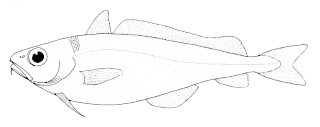 W
WMora moro, the common mora, is a deep-sea fish, the only species in the genus Mora. It is found worldwide in temperate seas, at depths of between 300 and 2,500 m. Its length is up to about 80 cm. Other names in English include goodly-eyed cod, googly-eyed cod, and ribaldo.
 W
WMora moro, the common mora, is a deep-sea fish, the only species in the genus Mora. It is found worldwide in temperate seas, at depths of between 300 and 2,500 m. Its length is up to about 80 cm. Other names in English include goodly-eyed cod, googly-eyed cod, and ribaldo.
 W
WNassarius turulosus is a species of sea snail, a marine gastropod mollusk in the family Nassariidae, the Nassa mud snails or dog whelks.
 W
WThe northern lampreys (Petromyzontidae) are a family of lampreys. Northern lampreys have the highest number of chromosomes (164–174) among vertebrates.
 W
WThe smalltooth sand tiger or bumpytail ragged-tooth is a species of mackerel shark in the family Odontaspididae, with a patchy but worldwide distribution in tropical and warm temperate waters. They usually inhabit deepwater rocky habitats, though they are occasionally encountered in shallow water, and have been known to return to the same location year after year. This rare species is often mistaken for the much more common grey nurse shark, from which it can be distinguished by its first dorsal fin, which is larger than the second and placed further forward. It grows to at least 4.1 m (13.5 ft) in length.
 W
WOmmatoiulus sabulosus aimatopodus is a millipede occurring in the South of France; belonging to the same species than Ommatoiulus sabulosus, it differs from the type by the lack of lighter transversal lines on the back when adult. It is believed to be a Mediterranean-climate adapted variant, but whether it is a true subspecies or rather an ecomorph is unclear; first described by Antoine Risso as a distinct species, it is for now considered as a form of Ommatoiulus sabulosus, under the name Ommatoiulus sabulosus f. aimatopodus.
 W
WParamuricea clavata, the violescent sea-whip, is a species of colonial soft coral in the family Plexauridae. It is found in shallow seas of the north-eastern Atlantic Ocean and the north-western Mediterranean Sea as well as Ionian Sea. This species was first described by the French naturalist Antoine Risso in 1826.
 W
WPericlimenes amethysteus is a species of shrimp found in the Adriatic and Aegean Sea, and the western Mediterranean Sea. It was first named by Antoine Risso in 1827.
 W
WPhorcus is a genus of sea snails, marine gastropod mollusks in the family Trochidae, the top snails.
 W
WPlanococcus citri, commonly known as the citrus mealybug, is a species of mealybugs native to Asia. It has been introduced to the rest of the world, including Europe, the Americas, and Oceania, as an agricultural pest. It is associated with citrus, but it attacks a wide range of crop plants, ornamental plants, and wild flora.
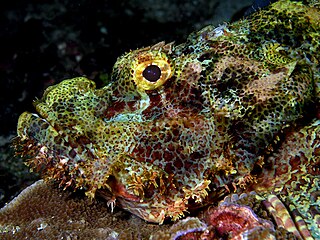 W
WThe Scorpaenidae are a family of mostly marine fish that includes many of the world's most venomous species. As their name suggests, scorpionfish have a type of "sting" in the form of sharp spines coated with venomous mucus. The family is a large one, with hundreds of members. They are widespread in tropical and temperate seas, but mostly found in the Indo-Pacific. They should not be confused with the cabezones, of the genus Scorpaenichthys, which belong to a separate, though related, family, Cottidae.
 W
WThe big-scale sand smelt is a species of fish in the family Atherinidae. It is a euryhaline amphidromous fish, up to 20 cm in length.
 W
WStenopus spinosus is a shrimp-like decapod crustacean belonging to the infraorder Stenopodidea.
 W
WThe smalltooth sand tiger or bumpytail ragged-tooth is a species of mackerel shark in the family Odontaspididae, with a patchy but worldwide distribution in tropical and warm temperate waters. They usually inhabit deepwater rocky habitats, though they are occasionally encountered in shallow water, and have been known to return to the same location year after year. This rare species is often mistaken for the much more common grey nurse shark, from which it can be distinguished by its first dorsal fin, which is larger than the second and placed further forward. It grows to at least 4.1 m (13.5 ft) in length.
 W
WThe Triglidae, commonly known as sea robins or gurnard, are a family of bottom-feeding scorpaeniform fish. They get their name from the orange ventral surface of the species in the Western Atlantic and from large pectoral fins, which, when swimming, open and close like a bird's wings in flight.
 W
WTruncatella is a genus of very small land snails with an operculum, terrestrial gastropod mollusks in the family Truncatellidae. These small and minute snails live on land, very close to seawater. They walk with a strange looping action, and the adults have truncated shells. Many of the species are small enough to be considered micromollusks.
 W
WThe blue whiting, Micromesistius poutassou, one of the two species in the genus Micromesistius in the cod family, is common in the northeast Atlantic Ocean from Morocco to Iceland and Spitsbergen. It also occurs in the northern parts of the Mediterranean, where it may be locally abundant. Blue whiting also occur in the northwest Atlantic Ocean between Canada and Greenland, but is considered rare. It has a long, narrow body and a silvery underbody. The fish can attain a length of more than 40 cm. The average length of blue whiting caught off the west shores of the UK is 31 cm.